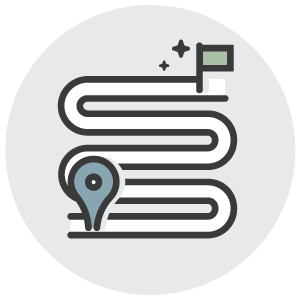It should come as no surprise that the spaces we occupy every day have a huge impact on our overall wellness. The Environmental Protection Agency and Vancouver Coastal Health report that Americans and Canadians spend about 90% of their time indoors. But what about the time we spend outdoors?
Your Welcoa membership has expired.
Tools for Designing Work for Well-Being
As the workplace landscape evolves, a new generation of the workforce emerges with unique needs, and employees continue to demand better work experiences, businesses must consider the one factor that addresses it all: designing work for well-being.
Integrating well-being into the foundation and fabric of workplaces is the link to addressing the concerns of today while preparing for the changes of tomorrow. We recognize though, that businesses struggle to conceptualize and implement an effective well-being strategy.
WELCOA provides the pathway to design, implement and sustain high-impact organizational development. These are the tools you need to begin designing work for well-being or enhancing the efforts that you’re making already.
Assessment Tools
To better navigate the needs of your employees and how best to align your well-being efforts with the business priorities of your organization, start by assessing your current state. Taking a workplace wellness assessment helps you understand exactly where you’re starting from and where you’ll need to go next. Our assessment also provides you with a pathway to a personalized plan to guide you on your journey.Learning Tools
After taking a workplace wellness assessment, you’ll want to sharpen your focus on designing and delivering engaging results-oriented wellness initiatives. Whether you’re a seasoned professional needing a refresh or building from the ground up, completing a comprehensive course will set a solid foundation for the work ahead. Our course Building a Results-Oriented Workplace Wellness Program is your next best step.Planning and Strategy Tools
Once you have a clear vision of where you’ve been, where you’re going, and how to get there, it’s time to start building your unique plan. We’ve created a 7-step process to help you cover all your bases when it comes to planning and strategizing for success. By using the guidance in this process, you can provide a credible framework that can be tailored toward organization-specific values, mission, vision, and goals for wellness.Step 1 – Committed and Aligned Leadership
In this step, you’ll learn how important leadership support is to your organization—or those you consult—to build a successful culture of wellness. The tools in this step will help you evolve your vision and determine the support you’ll need to shape your plan.Step 2 – Collaboration in Support of Wellness
Whether you’re riding solo or have a dedicated group, wellness teams should represent your culture and work together to build on your vision set in step 1. You’ll take away ideas for creating a strong team within your organization, how they can support the vision, and the characteristics you should incorporate for a cohesive team.Step 3 – Collecting Meaningful Data to Evolve a Wellness Strategy
This step will help you discover the type of data to collect to understand what your employees need to be successful and foster a work culture that supports your goals.Step 4 – Crafting an Operating Plan
Before you jump into action, you’ll need a detailed plan. Document the details of your wellness initiatives linked with the vision you set in step 1 to build a roadmap with set goals and opportunities to evaluate your investment in workplace wellness.Step 5 – Choosing Initiatives that Support the Whole Employee
Now for the action-packed moment you’ve been waiting for! This step may seem like a breeze—but aligning your vision, your team, your data, and your wellness strategy will help you bring the right interventions to your organization in support of healthy and thriving employees. Determining why, how, and what intervention you choose matters in the success of your wellness programs.Step 6 – Cultivate Supportive Health Promoting Environments, Policies, and Practices
By this step, you’ll have lots of momentum to keep you moving. Continue this important progress by championing whole employee wellness. Aim to create consistency – from your core vision all the way down to the resources you provide—to help foster unity in your organization. We provide sample policies, environmental considerations, and ways to use small nudges for positive health and wellness behaviors.Step 7 – Conduct Evaluation, Communicate, Celebrate, and Iterate
In this step, you’ll learn the importance of looking back at your efforts and learning from the data. The data you collected early on will help you determine how successful your approach has been and how to improve! Understand the importance of evaluating your initiatives, learn how to best communicate your results, and celebrate your successes!Development Tools
The fun doesn’t stop here. It’s essential that you stay on top of industry trends, best practices, and current research in order to for your efforts to continue to be impactful. Tools that can keep you sharpening your development include:- Training Events
- Educational Courses
- Articles and Blogs
- Resources and Toolkits
- Accessing Experts
- Accessing Vendors and Products
Connection Tools
This kind of work can feel isolating at times. Many organizations only have one individual dedicated to leading this work, so it’s important to stay connected to a greater community of leaders that are designing work for well-being alongside you. Get connected through WELCOA Community, or attend an annual workforce wellness conference to tap into your support system.Get Started
This work takes dedication, commitment, and passion, but following this pathway will support your efforts toward designing a better way to work. Each year thousands of business and health leaders deploy WELCOA protocols, strategies, and approaches with the intent of creating healthier cultures and improving employee health and well-being.Access to the WELCOA Platform will unlock everything you need for this laying the groundwork and staying ahead of future challenges.

Designing Work for Well-Being
In our series on corporate safety, we first shared the business imperative for this work. Then we outlined the role the organization needed to play. In our third webinar in the series, you heard from a company that redesigned work for wellbeing. Now it’s time for you to develop the model for your organization. This course will provide the pathway to assess your organization’s or client’s current strategy to build a modern model.
START THE COURSE »



